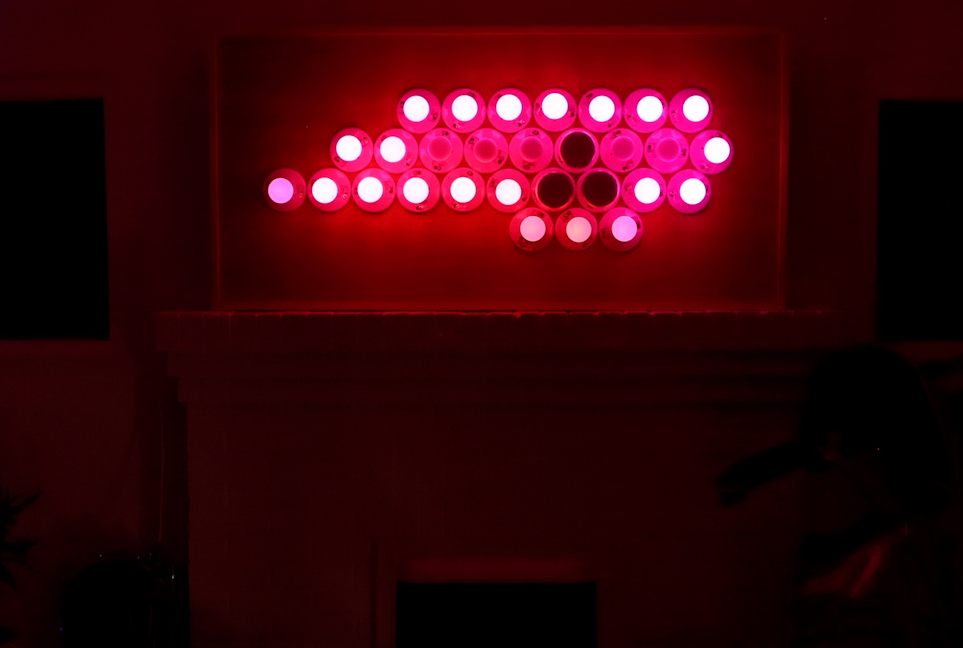Raspberry Pi Animates Sign Made of Phillips Hue LED Bulbs

The Raspberry Pi is a great go-to board for all sorts of LED projects. The GPIO pins and community support make it a very resourceful tool for a huge variety of illuminated creations. Today we’re sharing a unique creation from maker and developer Taylor Mingos who’s using a Raspberry Pi to drive a custom matrix made from Phillips Hue LED bulbs.
According to Mingos, the original idea was to create a sign in the shape of the state of North Carolina. This was put together back in 2015 and displayed in downtown Durham. Today, he’s sharing all the juicy details about how it works so you can make one in whatever shape you like.
The decision to use Phillips Hue bulbs comes with its own challenges. They aren’t like regular LEDs in that they require a bridge device and a network connection to function. There are a few ways to integrate the bridge with this project. One involves creating a LAN for it to connect to while the other involves using an existing network to which you already have access.



Mingos was kind enough to share a parts list for anyone interested in making something similar of their own. Because this was originally built in 2015, Mingos used a Raspberry Pi 2. That said, you could easily get away with a Pi 3 B+ or Pi 4. Phillips Hue bulbs can be a little pricey, so Mingos recommends trying to pick them up secondhand to save a little. You may or may not need a router, depending on how you want to set up the bridge.
The software for the project is completely open source and available on the project page over at Mingos’s blog. It’s worth noting that animations programmed on the Phillips Hue lights will be delayed because of the bridge. You can still make some really cool effects while keeping the limitations in mind. If you want something a little more precise and don’t need the look that comes with using full-sized light bulbs, a matrix might be better suited for your project.
If you want to see this Raspberry Pi project in action, check out the full project breakdown over at Taylor Mingos’s blog, and be sure to follow him for more cool projects.
Get Tom's Hardware's best news and in-depth reviews, straight to your inbox.

Ash Hill is a contributing writer for Tom's Hardware with a wealth of experience in the hobby electronics, 3D printing and PCs. She manages the Pi projects of the month and much of our daily Raspberry Pi reporting while also finding the best coupons and deals on all tech.